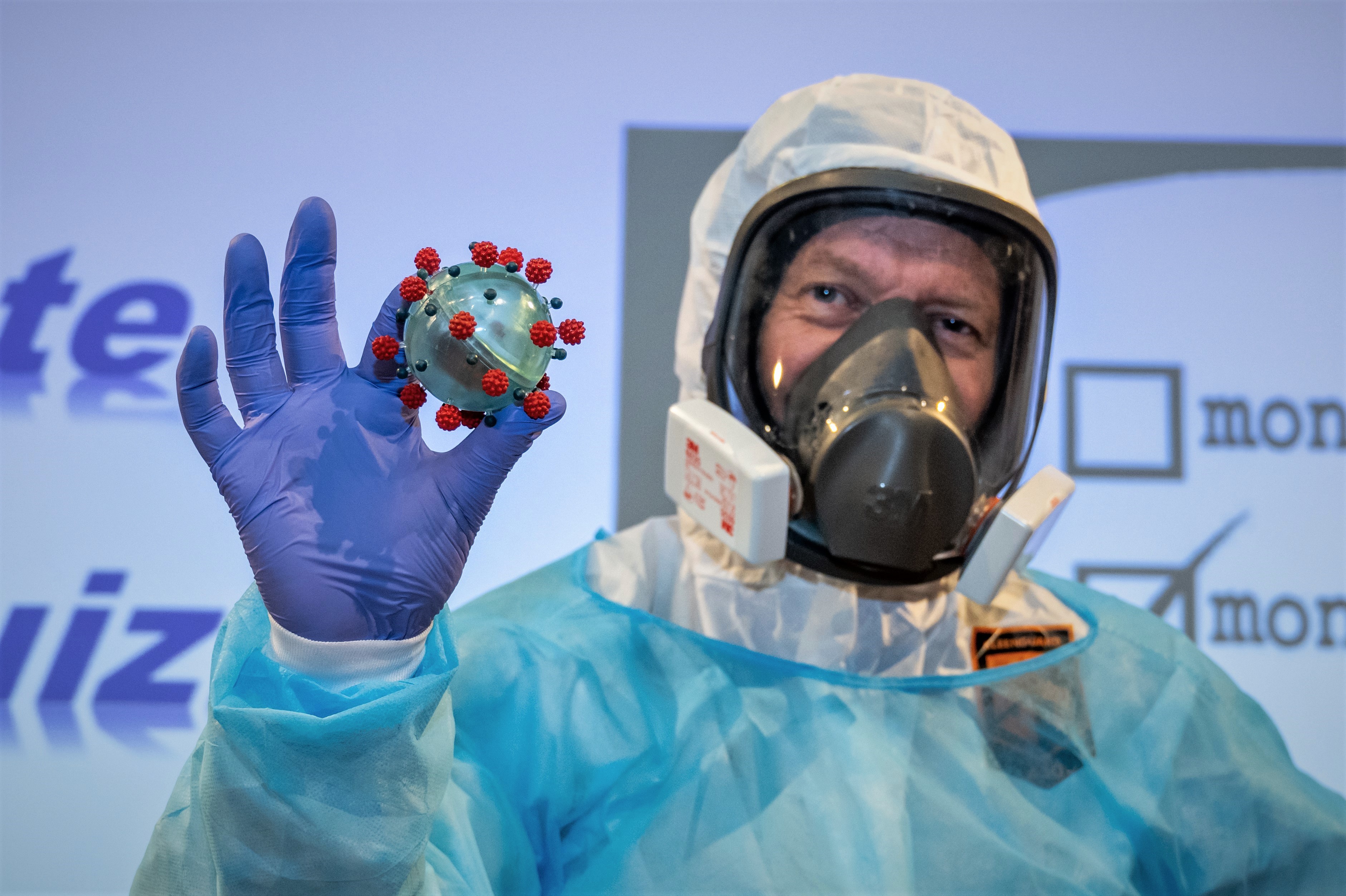Activities
Production of Vaccine and Challenge Strain
This work package aims to produce all required attenuated vaccine strains and a challenge strain for the controlled human infection model. Tasks of this work package comprise the production of a pre-master virus seed (pre-MVS), followed by a master seed virus (MVS), tech transfer to a contract manufacturing organisation (CMO) and production and purification of the vaccine virus into the final drug product (FDP) according to GMP standards. For the challenge virus, viruses isolated in cell culture will first be assessed (using Good Laboratory Practice [GLP]) to select one virus strain for producing the GMP challenge virus stock. The vaccine strains will be generated and characterised by Vivaldi. The challenge strain will be selected and characterised by MHRA. Vaccine and challenge strains will be produced following the same scheme at a CMO under the management of Vivaldi. The production is accomplished through an upstream process based on single-use cell factories and a downstream production process based on an SO3 monolith chromatography step. The upstream process can be divided into three main stages: (i)Vero cell expansion in static cultures, (ii) virus infection and propagation and (iii) harvesting and centrifugation. The downstream process encompasses four main stages: (i) DNA digestion by benzonase treatment, (ii) loading of the benzonase-treated intermediate on SO3 monolith, (iii) elution of the virus fraction in biological buffer (sucrose, HEPES, sodium chloride, recombinant human serum albumin [SHNA]), (iv) recombinant human serum albumin stabilization and 0.2 μm filtration. MVS strains will be made from the pre-MVS candidates and will serve as inoculum for producing the bulk drug harvests. After centrifugation of the harvest, the supernatant will be purified using a monolithic column. The purified strain Bulk Drug Substance (BDS) will be sterile filtered. This sterile filtered formulation represents the FDP. Quality control upstream: control cells before infection, adventitious agents, cytopathic effect, mycoplasmas, mycobacteria, in vitro extraneous agents, sterility. Quality control bulk drug substance: bioburden (before sterile filtration), total protein, attenuation marker (identity NS deletion), identity HA, genetic stability NS deletion, endotoxins, sterility, residual DNA, total protein, Vero host cell protein, residual benzonase, infectious titre, pH, osmolality. Quality control tests of the final drug product: infectious titre, appearance, general particulate matter testing, attenuation marker (identity NS1-deletion), identity HA (RT-PCR sequencing), sterility, endotoxins, total protein, sucrose, extractable volume, pH, osmolarity.
Preclinical Evaluation
This work package aims to evaluate candidate viruses in the prime-boost ferret (animal) challenge model. Animal trials will be designed to evaluate immune parameters while providing data on general toxicity, potential viral shedding in nasal mucosal secretions and viral load in tissues following immunisation. In addition, data on the protective efficacy of homologous and heterologous prime-boost delNS1 virus immunisations against a nheterologous wild-type virus challenge will be generated. The outcome of these preclinical studies will provide the basis for subsequent human safety, immunogenicity and efficacy studies. Influenza infection in ferrets closely resembles human infection in terms of symptoms (photophobia, catarrhal nasal discharge, sneezing, coughing, pyrexia, anorexia, and malaise), viral distribution and immunity. For this reason, candidate group 2 viruses delNS1/H3N2, delNS1/H7N9 and type B delNS1 viruses del1NS/Yamagata and del1NS/Victoria will be evaluated in the prime-boost ferret challenge model. These prime-boost challenge experiments aim to select strains and the sequence of immunisations that provides the best protection and immunogenicity. These studies with single formulated components will constitute the basis for formulating the final triple formulated prime and boost vaccines (each containing group 1, 2 and B strains). The dose and schedule have already been established for group 1 prime-boost strains (prime delNS1/H5N1 HA lacking polybasic cleavage site from A /Vietnam/1203/04), boost delNS1/H1N1, HA derived from A/NC/20/99) (see Excellence section 1.1.2. Preliminary results). They will be tested in a toxicology study.
.jpg)

Clinical Evaluation
This work package aims to:
- establish a new controlled human infection model for influenza,
- test the safety and immunogenicity of DeltaFLU vaccine in healthy adult volunteers,
- test preliminary efficacy of DeltaFLU vaccine in the controlled human infection model for influenza
- prepare and submit the clinical trial submission package
We design an expedited clinical trial pathway to rapidly de-risk downstream clinical development. After safety evaluation, the vaccine will be investigated for preliminary efficacy in a controlled human infection model for influenza. All clinical trials will be performed under the quality control system of the CHDR, which operates in full compliance with the principles of the Declaration of Helsinki (www.WMA.net), ICH GCP guidelines (http://www.ich.org/products/guidelines.html) and the pertaining laws and regulations. The data will be collected using electronic case report forms (CRFs) and CHDR’s electronic symptom diary cards.
Immunology and Correlates of Protection
This work package aims to identify correlates of protection (CoP) from preclinical and clinical challenge studies by combining unbiased analyses with hypothesis-driven targeted approaches. Immunogenicity data will be associated with challenge outcomes (prevention and duration of laboratory-confirmed influenza illness and the shedding of challenge virus) to investigate potential correlates of protection. In addition to standard assays, we will perform detailed cellular analysis in blood and nasal mucosa. The multi-omics analysis will then be used to identify CoP. Our study has the advantage of evaluating CoP in both preclinical studies (comprising two different animal challenge models, ferret and Syrian golden hamster) and clinical studies. It allows us to evaluate the capacity of the preclinical models to predict CoP in the human setting.
